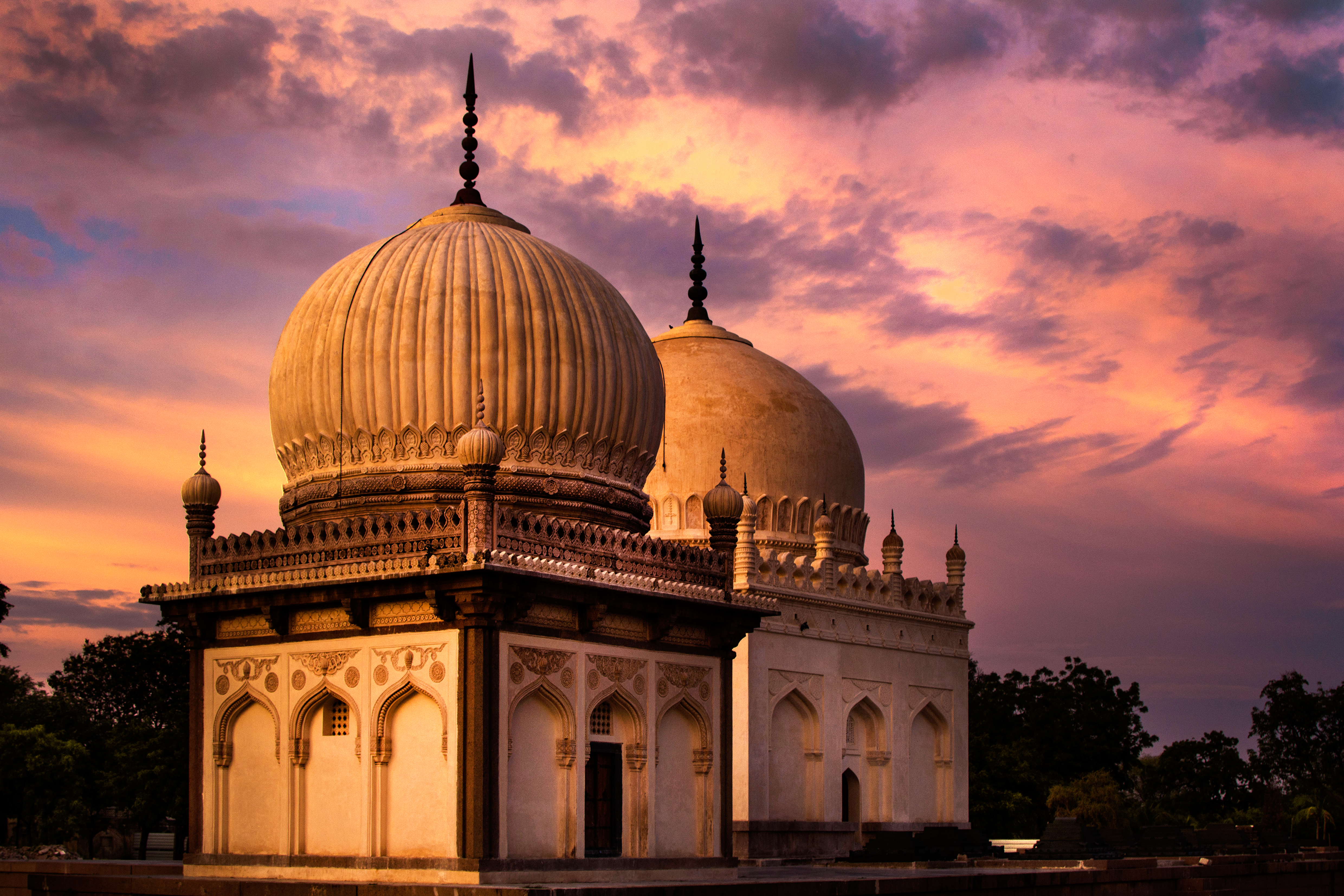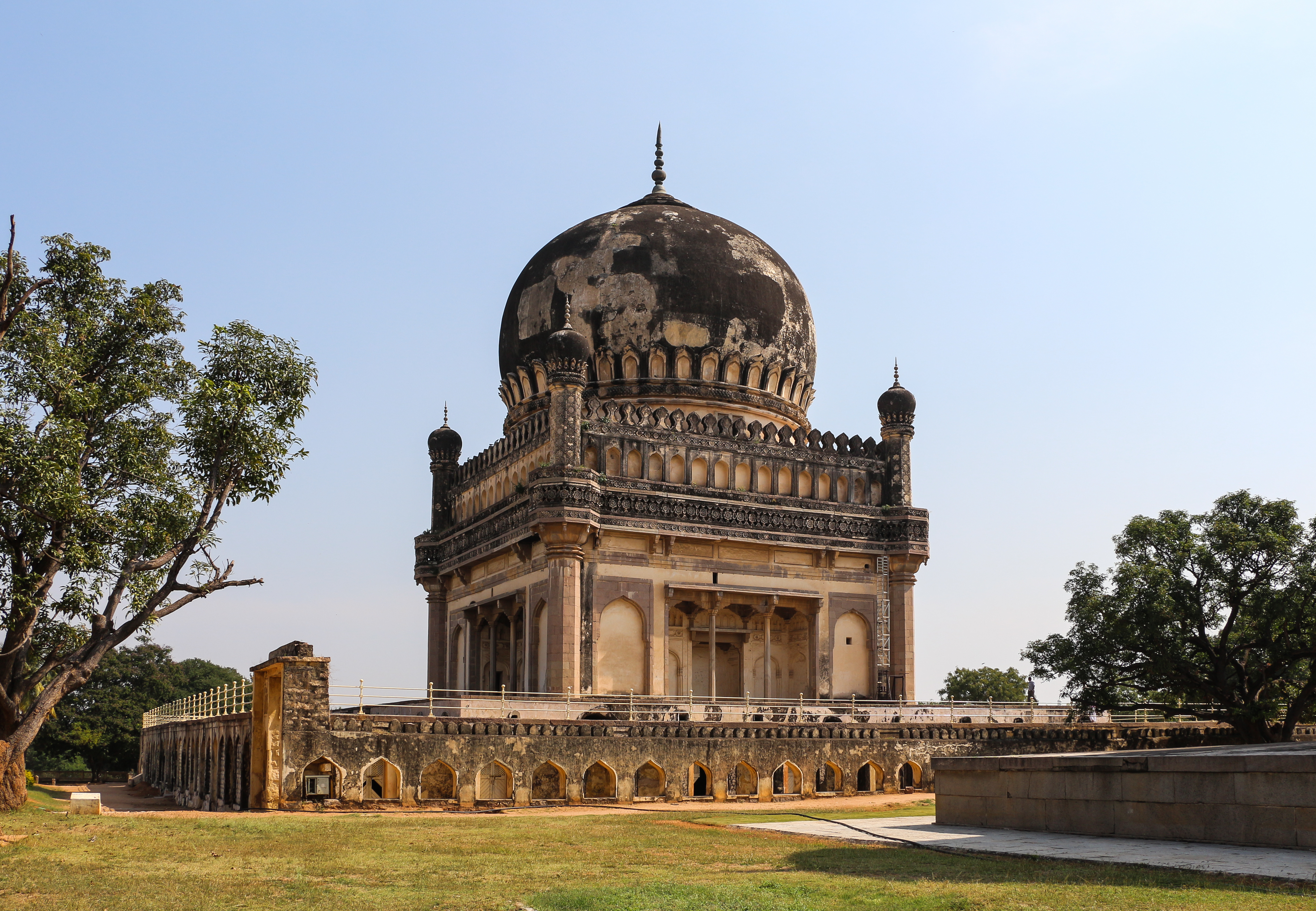The Qutb Shahi Tombs stand as an extraordinary testament to the architectural and cultural brilliance of the Qutb Shahi dynasty, which ruled the Deccan region from 1518 to 1687. Located in Hyderabad, Telangana, this remarkable complex represents a unique dynastic necropolis that encapsulates the rich historical narrative of one of the most significant kingdoms in medieval India.
Architecturally, these tombs represent a breathtaking fusion of Persian, Indian, Pathan, and Deccan architectural styles. Constructed primarily using grey granite with intricate stucco ornamentation, the tombs showcase an exceptional blend of cultural influences. The largest tomb, belonging to Mohammed Quli Qutb Shah, rises impressively to a height of 42 meters, crowned by a majestic dome that symbolizes the dynasty's grandeur.
The complex tells a profound story of dynastic evolution, featuring tombs of five of the seven Qutb Shahi rulers. Each structure reflects the changing political and cultural dynamics of the era. The tomb of Sultan Quli, the dynasty's founder, demonstrates remarkable modesty, while later tombs exhibit increasing architectural complexity and ornamentation, reflecting the kingdom's growing prosperity and cultural sophistication.
Cultural significance permeates every aspect of these tombs. The Qutb Shahi court was a vibrant multicultural environment where Persian, Turkish, Telugu, and Dakhni-Urdu languages flourished. This linguistic diversity mirrored the kingdom's cosmopolitan character, which attracted merchants, scholars, and artists from across the world. Historical accounts, including those by French merchant Jean-Baptiste Tavernier, validate the region's remarkable cultural dynamism.
An intriguing aspect of the tombs' historical narrative involves their role as a sanctuary. Local legends suggest that criminals seeking refuge within the complex were granted pardon, highlighting the cultural and religious significance of these structures beyond mere architectural monuments. This practice underscores the complex's importance as a social and spiritual space.
The tombs' preservation journey is equally fascinating. After the dynasty's fall in 1687, when the Mughal Empire finally absorbed the kingdom, these monuments experienced periods of neglect. However, significant restoration efforts, particularly by Salar Jung III in the early 19th century and more recently by the Telangana government and Aga Khan Trust for Culture, have ensured their survival and public accessibility.
The surrounding Ibrahim Bagh, with its meticulously landscaped gardens, enhances the tombs' aesthetic appeal. This carefully designed landscape complements the architectural grandeur, creating a serene environment that invites contemplation of the rich historical layers embedded within these structures. Today, the Qutb Shahi Tombs serve not just as a historical site but as a living museum of cultural heritage.
Modern conservation efforts have transformed these tombs into a significant tourist destination. The restoration project, considered one of the largest conservation works globally, has not only preserved the physical structures but also revived the historical narrative of the Qutb Shahi dynasty. Visitors can now explore a meticulously maintained complex that offers profound insights into a remarkable period of Indian history.








